Founded by the legendary Masutatsu Oyama as a full-contact karate style, Kyokushin is one of the most popular branches, with over 12 million practitioners worldwide. But during its 60+ year history, the school of Kyokushin has birthed many breakaway groups, including Shinkyokushin. Suppose you are a newcomer to karate and want to learn Kyokushin. In that case, you might have to choose between a school affiliated with the IKO (Kyokushin) or WKO (Shinkyokushin).
Kyokushin vs Shinkyokushin karate- what are the differences? Let’s discuss the K’s (Kihon, Kata, and Kumite). They are practically identical since they draw from the core teachings of Kyokushin founder Mas Oyama. The only real difference between Kyokushin and Shinkyokushin is branding and politics; they are just two different organizations teaching the same martial art style.
Why Kyokushin and Shinkyokushin exist under different parent organizations can be very confusing without proper context. You see, Kyokushin had turned into a global sensation during the 60s and 70s, with Mas Oyama sending instructors to foreign countries where they would teach his style. When he passed away in 1994, Oyama’s students couldn’t agree on who would be his successor. Shinkyokushin was one of many factions born from this struggle.
| Kyokushin | Shinkyokushin | |
|---|---|---|
| Origin | Created by Mas Oyama in the 1950s when he founded a Dojo in Tokyo | A group that split from the original IKO founded by Oyama; it was initially led by Yukio Nishida |
| Key Differences | Pushes are discouraged, and leg sweeps like the Ashibarai don’t reward as many points | Pushes are discouraged and leg sweeps like the Ashibarai don’t reward as many points |
| Strengths | Extreme physical conditioning, a focus on regular full-contact sparring to build confidence and spirit | The same as Kyokushin, Shinkyokushin has lots of sparring and streamlined kata |
| Weaknesses | Because of Kyokushin rules, students never learn how to target the head with their fists | Same as Kyokushin, a bit of boxing training is essential to becoming a well-rounded fighter |
| Difficulty | Compared to other styles of Karate, Kyokushin is more demanding of your body | IKO tournament rules are different; Kyokushin kata has some variations compared to Kyokushin |
| Popularity | One of the most popular styles | Like Kyokushin, it has millions of students around the world |
| Practicality | Probably the most practical of all karate styles in a “real” fight since you know how to take a hit | Shinkyokushin practitioners can dish out tremendous damage with punches and kicks in close quarters |
Is There a Meaningful Difference Between Kyokushin and Shinkyokushin Karate?

There is a slight difference between katas if you practice Kyokushin in a dojo that’s part of the NPO World Karatedo Federation Shinkyokushinkai. Also, when compared to IKO1 Kyokushinkaikan(International Karate Organization), Shinkyokushin features slightly more “sport-friendly” tournament rules. For example, a leg sweep (shibari) doesn’t result in a waza-ari, and even normal pushes or shoves are grounds for chui (warnings).
Another way to tell Kyokushin and Shinkyokushin apart is their logos. Kyokushin is represented by the “Kanku” symbol, derived from the Kanku Dai Kata. It’s formed by raising both hands to scan the sky and joining them with the tips of the index finger and thumb, fingers representing peaks, and wrists representing power.
Shinkyokushin, on the other hand, uses the “Kokoro” symbol, derived from the Japanese kanji of the same name (means heart or mind). The Kokoro symbol has three elements inside a red circle. The first and largest crescent represents the body, the middle crescent represents technique, and the circle atop represents the mind.
Origins of the Kyokushin Karate Style
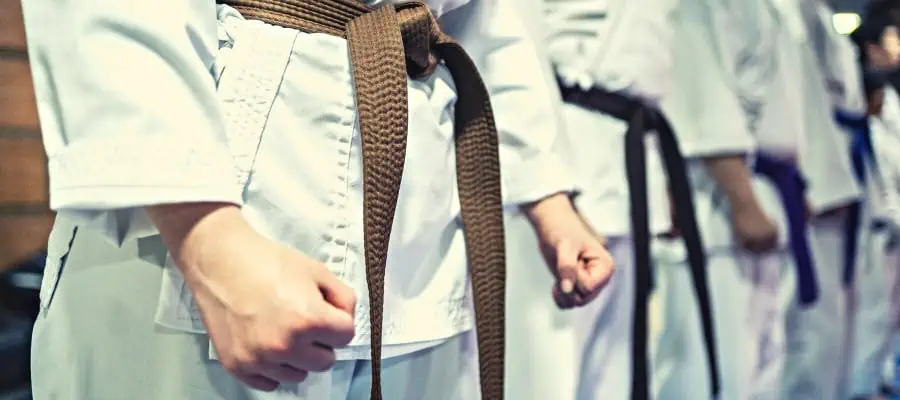
No matter which school you study under, all of them originated more than half a century ago from the genius mind of Masutatsu Oyama (also called Mas Oyama). Oyama was born in Korea in 1923 and traveled to China, where he learned Chinese martial arts at 9. The Eighteen-Hands style influenced him greatly during his stay in China.
At age 15, in 1938, Oyama left China for Japan to enroll in the Imperial Army’s aviation school. During this period, he learned judo and karate. Due to his exceptional natural talent, he achieved the rank of 4th Dan in Judo within just four years.
Mas Oyama trained directly under Funakoshi (the founder of Shotokan) and became a 4th Dan in karate. After the war, he fell into depression and would randomly get into brawls with the American military stationed in Japan. Then, he met a Korean Goju Ryu instructor- So Nei Chu- who provided him with a sense of purpose and instilled the budo code in him.
Oyama exiled himself from civilization to train in the Minobu mountains, hardening his body and spirit. He wished to be the ultimate fighter, and his 12-hour+ training days pushed the limits of human physiology. After returning from grueling training, he beat his competitors in the All-Japan Open Karate Championship.
Oyama eventually founded his own Dojo, which taught Goju Ryu. But soon, he realized that his style of karate included so much more, taking elements from Shotokan, Judo, and Goju Ryu. His Dojo would become the International Karate Organization Kyokushin Kaikan (IKO) in 1964- officially founding Kyokushin as a separate style.
Emergence of the International Karate Organization & Shinkyokushin
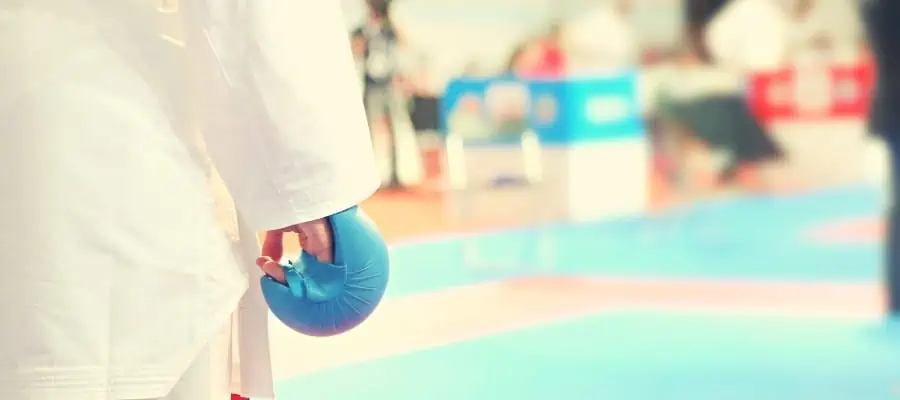
After founding the IKO, Oyama dispatched his best students to capture public interest in various Japanese cities. He even sent a few to foreign nations like Britain, America, the Netherlands, and Brazil.
Steve Arneil, who studied directly under Mas Oyama, was sent to spread Kyokushin in Britain. He split off in 1991 to found his own governing body- the International Federation of Karate (IFK).
Shin Kyokushin is one of the many IKO splinter factions formed after Mas Oyama’s death from lung cancer in 1994. Akiyoshi Matsui was named his successor since the old sensei had never chosen an official successor. At the time, Matsui was a 5th Dan, and this promotion didn’t go well with others who were senior to him.
Eventually, the IKO, founded by Oyama, split into multiple groups. IKO1 was headed by Matsui, while IKO2 (Shinkyokushinkai) was led by Yukio Nishida (and later Kenji Midori). In total, 5 different IKOs were formed, and IKO2 became NPO World Karate Organization Shinkyokushinkai in 2003.
Is There Any Difference in Techniques or Katas Between the Two Styles?
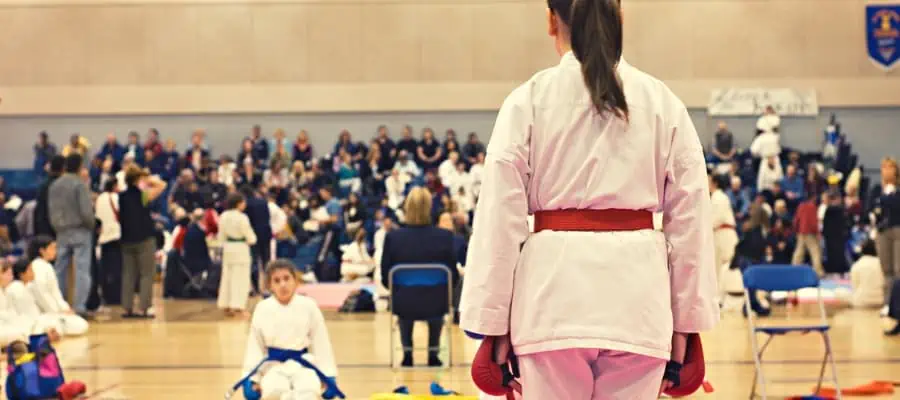
Yes, although the differences are minor at best. Some Shinkyokushin katas use narrower leg stances and slightly different movements. Anyone who’s a Shinkyokushin student can easily adjust to new katas from a different organizing body.
Should You Learn Kyokushin/ Shinkyokushin Karate?

If you want a style of karate that will prepare you mentally and physically for real brawls, Kyokushin is the way to go. However, you should start as early as possible. Sure, older people can also get into Kyokushin- but it’s high physical stress with lots of stamina building and full contact sparring.
Popular Practitioners of Kyokushin
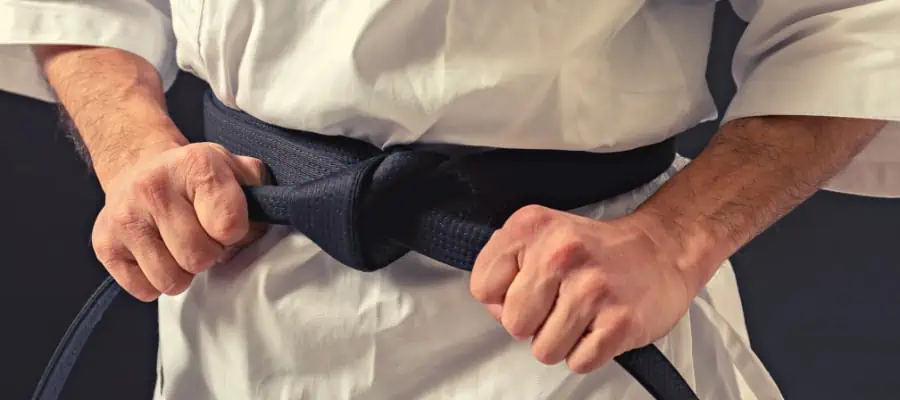
Over the years, several public figures have been ranging from actors and celebrities to cage fighters who’ve demonstrated the prowess of Kyokushin as a martial art. One is action movie star Dolph Lundgren; you probably remember him as Ivan Drago from Rocky IV. Then, there’s UFC Hall of Famer Georges St-Pierre (GSP), who got into Kyokushin at seven to defend himself from a bully.
Five-time World’s Strongest Man, Mariusz Pudzianowski, is also a Kyokushin student (4th Kyu green belt). Currently, he’s known for his exploits in the MMA scene. Hollywood action star Michael Jai White is also a Kyokushin practitioner.
Final Words
I hope this article gave you insight into the technical differences between IKO Kyokushin and WKO Shinkyokushin. While they practice the same style derived from Mas Oyama’s teachings, the tournament rules and kata have minor variations. Ultimately, you can’t go wrong with either- pick a school of your choice and train hard.
If this article was helpful to you, don’t forget to add it to your Pinterest board.
One thought on “Kyokushin vs Shinkyokushin Karate: What are the differences?”
Leave a Reply
Recent Posts
What is Manachai's Fighting Style? Unveiling Muay Thai Mastery
Manachai, a celebrated figure in the Muay Thai world, has captivated audiences with his exemplary martial prowess. Hailing from the heartlands of Thailand, his name is synonymous with the art of...
What Was Chamuekpet Hapalang's Fighting Style? Unveiling Techniques
Chamuekpet Hapalang was a renowned figure in the world of Muay Thai (record 200-48-2), embodying a fusion of Muay Bouk and Muay Khao styles. Originating from Thailand, the art of Muay Thai is known...
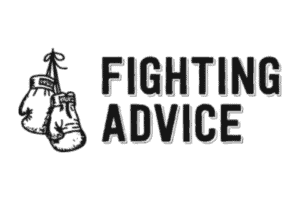

Thank you Gregori.
I have found reading your article very interesting, I didn’t know that there are so many different factions of Kyokushinkai Karate. I’m an ex practitioner who trained under Shihan Steve Arniel over thirty plus years ago, and gained my black belt. I’m now looking to train again at the age of sixty four in the same dojo. Thank you again, Oos!